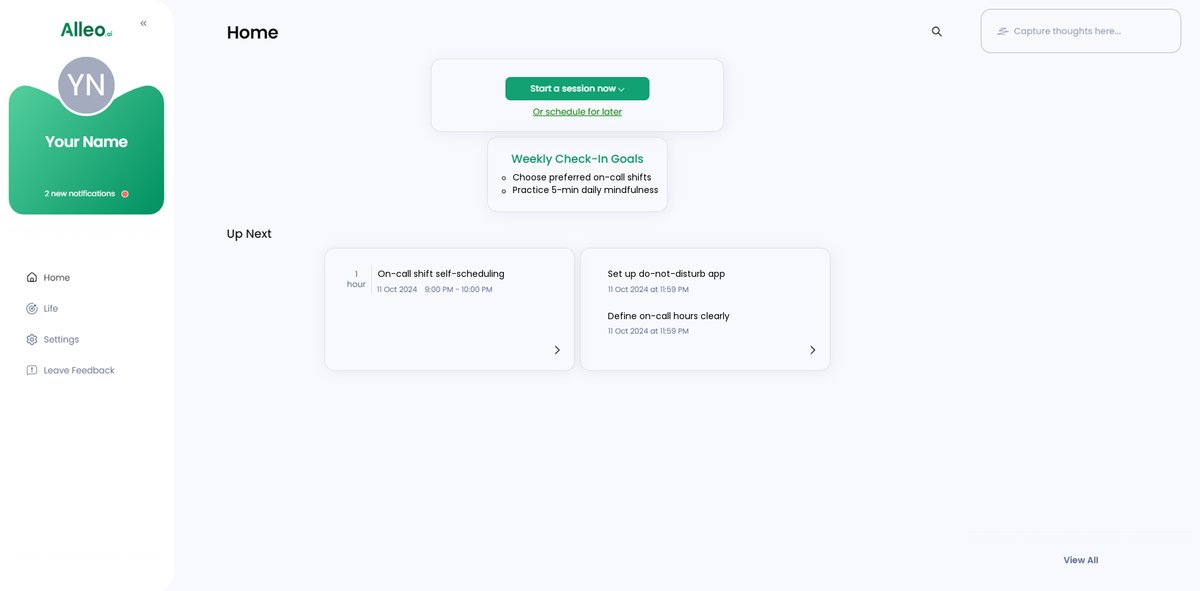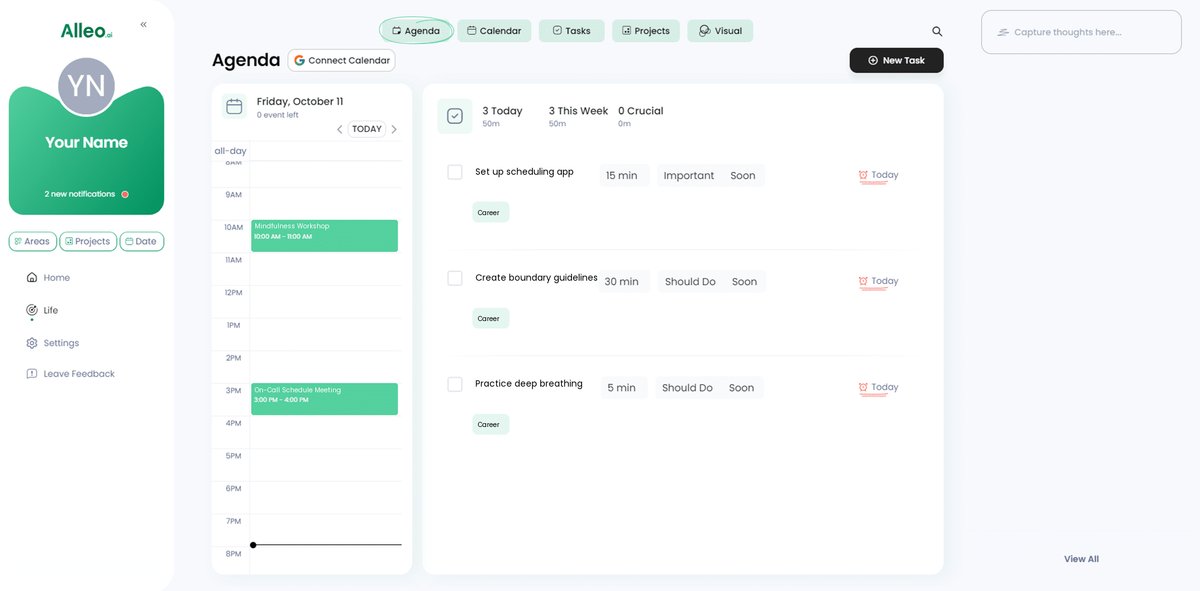5 Powerful Strategies for Doctors to Achieve Work-Life Balance While On-Call
Imagine being a doctor, juggling the demands of a busy hospital while longing for more family time. How can you achieve that elusive work-life balance for on-call doctors?
As a life coach, I’ve helped many professionals navigate these challenges. I’ve seen firsthand the toll unpredictable schedules can take on personal life and mental health, especially when it comes to physician burnout prevention.
In this article, you’ll discover actionable strategies such as flexible scheduling, technology tools for on-call physicians, clear boundaries, mindfulness, and equitable rotation to improve your work-life balance. These time management techniques for on-call physicians can help with stress reduction and on-call schedule optimization.
Let’s dive in to explore work-life integration for doctors and self-care for medical professionals.

Understanding the Pressures of On-Call Duties
Being a doctor often means working long hours and being available for on-call shifts. This pressure is immense, impacting both your personal life and mental health, making work-life balance for on-call doctors a crucial concern.
Many doctors miss important family events due to unpredictable schedules. This constant tug-of-war between professional obligations and personal desires is exhausting, highlighting the need for effective time management for on-call physicians.
In my experience, people often find that these irregular hours exacerbate stress and burnout. The lack of a predictable routine can also lead to chronic sleep disorders and increased anxiety, emphasizing the importance of stress reduction techniques for doctors.
Imagine how this affects your overall well-being. It’s clear that finding a solution is crucial for a balanced life, which is why on-call schedule optimization and self-care for medical professionals are essential.
Let’s explore actionable strategies to address this work-life balance for on-call doctors.
Key Steps to Achieve Work-Life Balance for On-Call Doctors
Overcoming this challenge requires a few key steps. Here are the main areas to focus on to make progress towards work-life balance for on-call doctors:
- Implement flexible self-scheduling for on-call: Allow doctors to choose and trade shifts, ensuring fair and flexible schedules for on-call physicians.
- Use technology to optimize on-call response: Implement tools like AI-driven alerts and telehealth for efficiency, enhancing time management for on-call physicians.
- Establish clear “On-Call” vs “Off-Grid” boundaries: Define specific hours and provide tools for setting boundaries, supporting work-life integration for doctors.
- Practice mindfulness during on-call shifts: Integrate mindfulness exercises and offer stress reduction techniques for doctors to prevent physician burnout.
- Rotate on-call duties equitably among team: Develop a fair rotation schedule to distribute on-call responsibilities, improving on-call schedule optimization.
Let’s dive in!
1: Implement flexible self-scheduling for on-call
Implementing flexible self-scheduling for on-call duties can significantly improve work-life balance for on-call doctors.
Actionable Steps:
- Empower doctors to choose their on-call shifts using a self-scheduling platform. Track preferences and satisfaction levels to optimize on-call schedule optimization.
- Facilitate shift trading among team members. Create a system to ensure fairness and monitor successful trades, supporting work-life integration for doctors.
- Adjust working hours around on-call shifts. Record and communicate any policy changes clearly to all staff, promoting time management for on-call physicians.
Explanation: Empowering doctors with flexible scheduling options can reduce stress and improve satisfaction. According to Nitra, such strategies can enhance job satisfaction and overall well-being, contributing to physician burnout prevention.
Implementing these practices aligns with current industry trends, emphasizing the importance of work-life balance for on-call doctors in healthcare.
Benefits of flexible self-scheduling include:
- Improved work-life balance for on-call doctors
- Increased job satisfaction
- Better team collaboration and efficient handover strategies for doctors
Flexible self-scheduling is the first crucial step toward achieving a balanced professional and personal life in medicine, supporting self-care for medical professionals.

2: Use technology to optimize on-call response
Leveraging technology can significantly enhance your efficiency and reduce stress during on-call shifts, contributing to better work-life balance for on-call doctors.
Actionable Steps:
- Implement AI-driven alert systems to categorize and prioritize calls. Track response times and outcomes to measure effectiveness, improving on-call schedule optimization.
- Utilize telehealth platforms for non-critical consultations. Monitor the number of telehealth sessions to ensure proper usage, enhancing time management for on-call physicians.
- Integrate electronic health records (EHR) for quick patient data retrieval. Measure time saved in accessing information, supporting efficient handover strategies for doctors.
Explanation: Utilizing technology can streamline your on-call responsibilities, making them more manageable and aiding in physician burnout prevention.
According to Mind Share Partners, improving access to patient data and prioritizing calls can significantly reduce stress and improve response times, crucial for work-life integration for doctors.
Embracing these tools aligns with industry trends focused on efficiency and well-being, supporting on-call support systems for healthcare providers.
These steps will make your on-call duties less overwhelming and more efficient, promoting better work-life balance for on-call doctors.

3: Establish clear “On-Call” vs “Off-Grid” boundaries
Establishing clear “On-Call” vs “Off-Grid” boundaries is crucial to protect your personal time and reduce stress for on-call doctors, promoting work-life balance.
Actionable Steps:
- Define specific on-call and off-grid hours. Clearly set start and end times for on-call periods to optimize on-call schedules.
- Equip doctors with do-not-disturb apps or technology tools for on-call physicians. Track the usage of these boundary-setting tools.
- Offer compensatory time off post on-call shifts as part of physician burnout prevention. Record the time off taken and its impact on well-being.
Explanation: Setting clear boundaries helps you manage your time better, reducing the impact of on-call duties on your personal life and improving work-life balance for on-call doctors.
According to Gmorris, distinguishing between work and personal time can enhance your overall well-being and job satisfaction, supporting work-life integration for doctors.
Implementing these steps aligns with the trend of promoting a healthier work-life balance for medical professionals.
Taking these steps will help you maintain a better balance between your professional and personal life in medicine.
4: Practice mindfulness during on-call shifts
Practicing mindfulness during on-call shifts can significantly enhance your mental health and overall well-being, contributing to a better work-life balance for on-call doctors.
Actionable Steps:
- Integrate short mindfulness exercises into your daily routines. Practice deep breathing or meditation for 5 minutes as a stress reduction technique for doctors.
- Offer mindfulness-based stress reduction (MBSR) workshops regularly. Monitor attendance and feedback from these workshops to support physician burnout prevention.
- Create quiet spaces for relaxation during shifts. Designate areas in the hospital for relaxation and evaluate their usage, promoting self-care for medical professionals.
Explanation: Incorporating mindfulness can reduce stress and improve focus during on-call shifts, aiding in work-life integration for doctors. According to HIPAA Exams, mindfulness practices can help manage stress and enhance well-being.
Adopting these steps aligns with industry trends promoting mental health and work-life balance for on-call doctors.
Key benefits of mindfulness during on-call shifts:
- Reduced stress and anxiety, supporting on-call schedule optimization
- Improved focus and decision-making, enhancing time management for on-call physicians
- Enhanced overall well-being, contributing to work-life balance for on-call doctors
By practicing mindfulness, you can better manage the demands of on-call duties and maintain your well-being, ultimately improving work-life balance for on-call doctors.

5: Rotate on-call duties equitably among team
Rotating on-call duties fairly among your team is essential for maintaining a balanced work-life dynamic for on-call doctors.
Actionable Steps:
- Develop a fair rotation schedule. Ensure each doctor takes turns equally, preventing burnout and promoting work-life balance for on-call doctors.
- Use software to automate and track rotations. This guarantees transparency and fairness in scheduling, supporting on-call schedule optimization.
- Offer compensatory time off. Ensure doctors receive adequate rest after intense on-call periods, promoting self-care for medical professionals.
Explanation: Ensuring equitable rotation of on-call duties helps distribute the workload evenly, reducing stress and fatigue, which is crucial for time management for on-call physicians.
According to the American Medical Association, fair scheduling practices can significantly enhance job satisfaction and well-being.
Following these steps aligns with the growing focus on physician well-being and burnout prevention.
Advantages of equitable rotation include:
- Reduced individual workload
- Improved team morale
- Prevention of burnout and support for work-life integration for doctors
This approach will help you and your team maintain a healthier work-life balance for on-call doctors and improve overall job satisfaction.

Partner with Alleo to Achieve Work-Life Balance for On-Call Doctors
We’ve explored the challenges of balancing on-call duties with personal life, and the steps to achieve work-life balance for on-call doctors. Did you know you can work directly with Alleo to make this journey easier and faster for physician burnout prevention?
Set up an account to get started. Create a personalized plan with Alleo’s AI life coach for efficient time management for on-call physicians and stress reduction techniques for doctors.
You’ll receive tailored coaching sessions, just like with a human coach. Alleo will follow up on your progress, manage changes, and keep you accountable via text and push notifications, supporting work-life integration for doctors.
Ready to get started for free? Let me show you how to optimize your on-call schedule and improve self-care for medical professionals!
Step 1: Log In or Create Your Account
To begin your journey towards better work-life balance as an on-call doctor, Log in to your account or create a new one to access Alleo’s personalized AI coaching tailored to your unique schedule and needs.

Step 2: Choose Your Focus Area
Click on “Improving overall well-being and life satisfaction” to address the work-life balance challenges you face as an on-call doctor, setting the foundation for a more fulfilling personal and professional life.

Step 3: Select “Career” as Your Focus Area
Choose “Career” as your focus area in Alleo to address the challenges of balancing on-call duties with personal life, allowing you to receive tailored strategies for improving work-life balance in your medical profession.

Step 4: Starting a coaching session
Begin your journey with Alleo by scheduling an intake session, where you’ll discuss your work-life balance goals as a doctor and create a personalized plan to manage your on-call duties more effectively.

Step 5: Viewing and Managing Goals After the Session
After your coaching session on work-life balance, check the Alleo app’s home page to view and manage the goals you discussed, helping you track your progress towards achieving a better balance between your on-call duties and personal life.

6: Adding events to your calendar or app
Use Alleo’s calendar and task features to schedule and track your on-call shifts, personal commitments, and progress towards achieving a better work-life balance, helping you visualize your time allocation and stay accountable to your goals.

Achieving Balance: Your Path Forward
Balancing on-call duties with personal life is challenging for doctors, but it’s not impossible. By implementing flexible scheduling, leveraging technology for on-call physicians, setting clear boundaries, practicing mindfulness for stress reduction, and rotating duties fairly, you can find that work-life balance for on-call doctors.
Remember, you’re not alone in this journey. Many doctors face these same challenges in work-life integration, and there are solutions that work for physician burnout prevention.
Alleo can be your partner in this endeavor. With tailored coaching and automated support, you can achieve a healthier work-life balance for on-call doctors and improve time management for on-call physicians.
Take the first step today. Set up a free account with Alleo and start transforming your life with efficient on-call schedule optimization.
You deserve it.